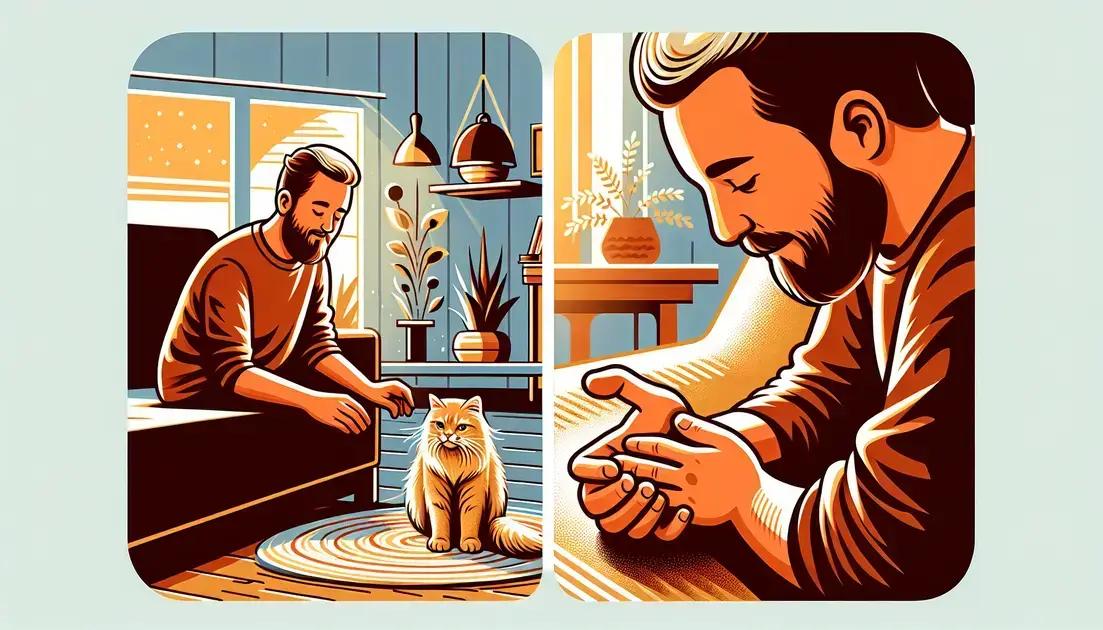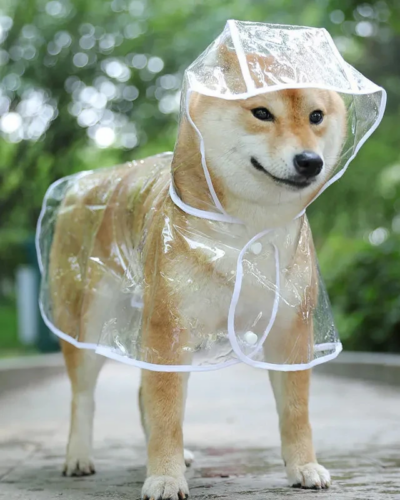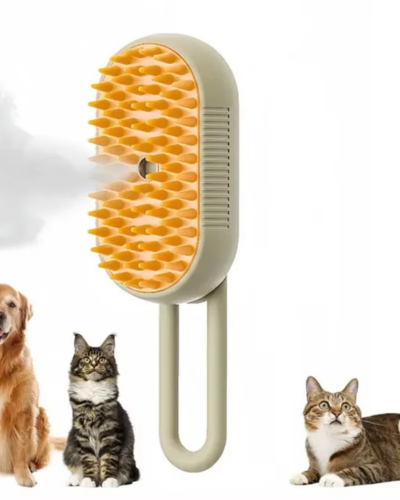Free delivery for orders over £45

Understanding Your Cat’s Body Language for Better Bonding
Table of Contents
Understanding cat body language is essential for anyone looking to form a deeper bond with their feline friend. Cats express themselves in various subtle ways, and learning to interpret these signals can lead to a more harmonious relationship. From the position of their tails to the movement of their ears and the tone of their meows, every action can tell you something about your cat’s feelings and intentions. This guide will help you become more attuned to these signs, strengthening your connection with your cat over time.
The Basics of Cat Body Language
Understanding the subtleties of your cat’s body language is essential in building a strong and trusting relationship. Cats communicate a lot through their positions and movements, and having a good grasp of these signals can greatly improve your interactions.
Cats use their entire bodies to express themselves, from their whiskers to their tails. Each part plays a role in conveying how they feel at any given moment. A cat’s posture can tell you whether they are feeling relaxed, anxious, or even playful. For instance, a cat lying on its back with its belly exposed usually indicates a high level of trust and contentment, although it may not be an invitation for a belly rub.
It’s also important to consider how different parts of the body align or contrast. A cat with a relaxed but alert posture, ears forward, and soft eyes is likely communicating contentment and interest. Conversely, a cat with its body hunched, tail tucked, and ears back may be feeling stressed or frightened.
Pay attention to smaller cues as well, such as the way your cat moves or the position of their paws. Cats often communicate subtle messages with these less obvious gestures, providing an insight into their inner world. Observing your cat in different situations can help you understand these basic signs, leading to a more harmonious and stress-free companionship.
To enhance your bond, learn to respond appropriately to your cat’s body language. If they display tension, give them space. When they show signs of affection, acknowledge it with gentle strokes or reassuring words. With time, you’ll become more attuned to your cat’s personal language, helping foster a more enriched and fulfilling relationship.
Decoding Cat Tail Movements
Your cat’s tail tells you a lot about their feelings and intentions. Recognising tail movements can open a window of understanding into their world. Firstly, a tail held high signifies confidence and contentment. When your cat approaches you with a vertical tail, it is expressing its happiness and readiness for interaction. You may notice the tip twitching slightly which indicates they are especially happy to see you.
Low or Tucked Tail: On the other hand, a lowered tail might indicate fear or insecurity. It is crucial to approach gently, giving your cat space and time to adjust. A cat with a tucked tail is likely experiencing anxiety or submission.
Puffed-Up Tail: You have probably observed a puffed-up tail when your cat faces a confrontation or feels threatened. This action makes them appear larger to scare off potential threats. It’s vital during such moments to ensure they have a calm environment away from stressors.
Thrashing Tail: Unlike dogs, a wagging cat tail is not always a sign of happiness. A rapidly swishing or thrashing tail usually signifies agitation or irritation. It is a warning sign to cease current actions and allow your cat to calm down.
Gentle Swishing: Sometimes a slow, gentle swish means your cat is just mildly curious or contemplative. They may be observing their surroundings, engaged in deep thoughts or considering their next move. This subtler movement often accompanies other relaxed body language.
By being attentive to your cat’s tail language, you can respond appropriately and foster a trustful relationship. Observing and respecting these signals not only strengthens your bond but also contributes to a peaceful, harmonious coexistence.
Understanding Cat Ear Positions
Cats use their ears as a powerful tool for communication, revealing their mood and intentions through various positions. Observing your cat’s ear movements is crucial in understanding their behaviour.
When a cat’s ears are pointed forward, it often indicates curiosity or interest, perhaps in a new toy or sound. It suggests they’re focused and attentive to their environment. Conversely, if the ears tilt slightly to the side, your feline might be relaxed and comfortable, signalling a peaceful state.
Beware of ears that are flattened back against the head. This posture usually indicates fear, anxiety, or aggression. In such cases, cats might be feeling threatened and preparing to defend themselves. Recognising this signal allows you to give them space and minimise stress.
Sometimes, a cat’s ears may swivel independently, moving in different directions. This typically suggests they’re paying attention to multiple stimuli, indicating alertness to their surroundings. It’s a sign your cat is gathering information from various sources and is actively engaged.
Understanding these subtle cues can enhance your interaction with your furry companion.
Being mindful of ear positions helps you respond appropriately to their emotions, fostering a deeper bond and ensuring their comfort.
The Significance of Cat Eye Contact
Cats often use their eyes to communicate, and understanding these cues can significantly enhance the bond with your feline friend. Eye contact in cats can convey a myriad of emotions and intentions. For instance, a slow blink from your cat is often a sign of trust and affection. This gesture, often referred to as a ‘cat kiss,’ indicates that your cat feels safe and comfortable in your presence.
Conversely, prolonged staring without blinking can be a sign of aggression or discomfort. Cats might use this form of eye contact to assert dominance or assess a potential threat. It’s important to be mindful of your posture and response during such moments, as maintaining eye contact of this nature might escalate tension.
In addition to blinks and stares, the pupil size in a cat’s eyes also plays a crucial role in their non-verbal communication. Contracted pupils can indicate anger or irritability, while dilated pupils often signify excitement, fear, or the need to fight or flee. This response is typically instinctive, helping your cat react to their environment swiftly.
Furthermore, observing the direction of your cat’s gaze can provide insights into their interests or alertness. If your cat is intently watching a specific area or object, it might be a sign of curiosity or caution, guiding you to identify potential stimuli or stressors in their environment.
By paying close attention to these eye-related cues, you can respond appropriately to your cat’s needs and emotions, thereby fostering a deeper understanding and connection.
Cat Vocalizations and Their Meanings
Cats have a unique way of expressing themselves through vocalizations. Each sound they make provides insight into their feelings and needs. Understanding these sounds can greatly enhance your relationship with your feline friend. Cats primarily use meowing to communicate with humans, tailoring their meows based on the response they receive. A short, soft meow may indicate a greeting or a request for attention, while a more persistent or loud meow may signal hunger or discomfort.
The purring sound is often associated with a content and relaxed cat, but it’s not exclusively a sign of happiness. Cats may also purr when they’re anxious or in pain as a self-soothing mechanism. Pay attention to the context and accompany body language to gauge the true emotion.
Beyond meows and purrs, cats have a variety of other sounds, such as hissing, growling, and chirping. Hissing and growling usually indicate fear or aggression and are often directed at other animals or during stressful situations. In contrast, chirping, often heard when a cat is observing birds or other prey animals, reflects excitement or frustration.
Recognising the nuances in cat vocalizations can lead to a more harmonious relationship by acknowledging their emotions and responding appropriately. Cultivating this understanding allows you to tune into your cat’s needs and fosters a deeper bond through attentive care and affection.
How Cats Use Their Whiskers in Communication
Cats possess advanced communication abilities, often subtle and easily overlooked. Whiskers, scientifically known as ‘vibrissae’, play a critical role in feline communication. Positioned strategically on the face and body, these tactile hairs help cats navigate, understand their surroundings, and express emotions and intentions.
Whiskers are highly sensitive and packed with nerve endings, allowing cats to detect minute changes in their environment. This sensitivity extends to understanding social cues from other animals and humans. For instance, when a cat’s whiskers spread forward, it may indicate curiosity or interest in the surroundings or a person. Conversely, whiskers pulled back tightly can suggest that the cat feels threatened or anxious.
Moreover, whiskers assist in spatial awareness, but they also act as a communication tool. When greeting another cat or human, a
subtle whisker movement
could convey friendliness or a willingness to interact. In playful or relaxed situations, cats might keep their whiskers slightly to the side, reflecting their laid-back mood.
By observing whisker positions along with other body language cues, such as ear positions, tail movements, and eye contact, cat owners can gain a comprehensive understanding of their pet’s mood and needs. This heightened awareness can lead to more harmonious and meaningful interactions between humans and their feline companions.
Strengthening Your Bond with Your Cat Through Body Language
Strengthening your connection with your feline friend involves more than just understanding their body language; it’s also about responding appropriately to these cues. Cats often communicate their comfort level through subtle actions, and responding in a supportive way can significantly enhance your relationship.
One important aspect is recognising when your cat is feeling anxious or threatened. If your cat’s tail is tucked close to its body or its ears are flat back, this may indicate discomfort. In such cases, give your cat space and time to relax, as this can help build trust.
Another way to strengthen your bond is through positive reinforcement. When your cat displays open and relaxed body language, such as a softly swaying tail or gently flicking ears, take the opportunity to engage with them gently. This can include offering treats, brushing their fur, or simply spending quiet time together. Responding to positive cues with affection can make your cat feel more secure and loved.
Interactive Play & Body Language
Interactive play sessions can be a key method of bonding. Ensure you are observing your cat’s body signals during play. Cats enjoy a mixture of gentle engagement and more active play, but it’s vital to notice when they have had enough. Look for signs like dilated pupils or rapidly swishing tails as indicators to tone down the activity.
Attention to your own body language is also important. Approach your cat slowly and avoid direct eye contact, which can appear threatening. Instead, blink slowly and maintain a relaxed posture to appear non-threatening. By being aware of both your body language and your cat’s, you can foster a more harmonious relationship.
-
Pet Anywhere
10,00 € – 11,00 € -
Dry Fast
12,00 €Original price was: 12,00 €.10,00 €Current price is: 10,00 €.
Contact Us
- +44 07391626201
- info@promotepet.com
- 16, Cromwell Close - Oxford - UK
COPYRIGHT © PROMOTE PET. ALL RIGHTS RESERVED. © 2024 Chofard Enterprise Ltd. Chofard Enterprise is a company registered in England and Wales with a company number 13073779 VAT number GB 370644889. 16, Cromwell Close, Oxford OX30RW, United Kingdom – trading as Promote Pet Online Shop.











